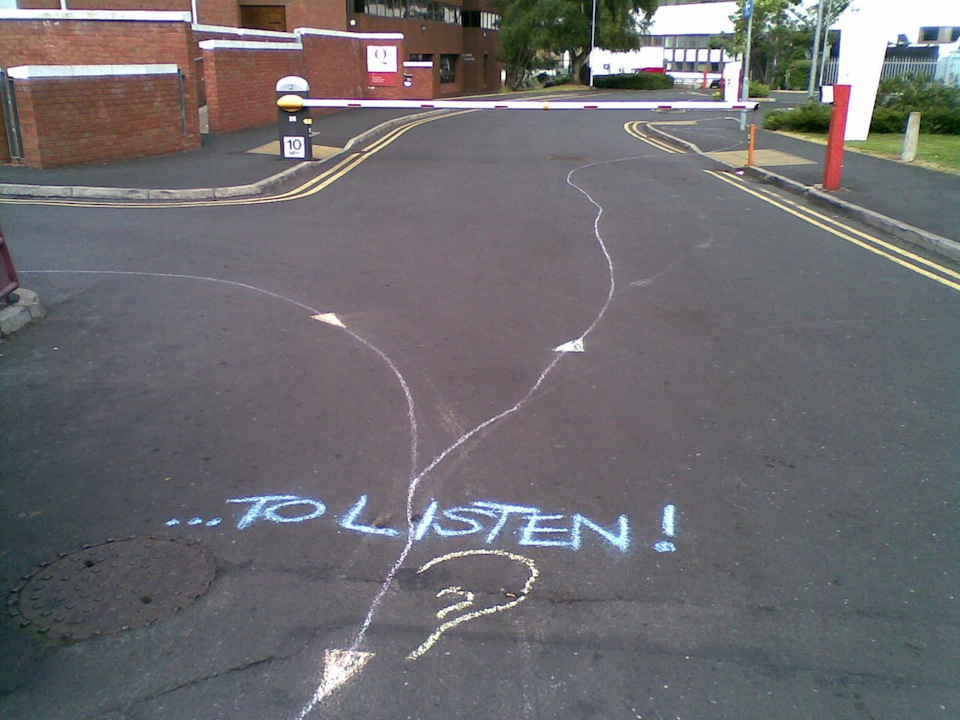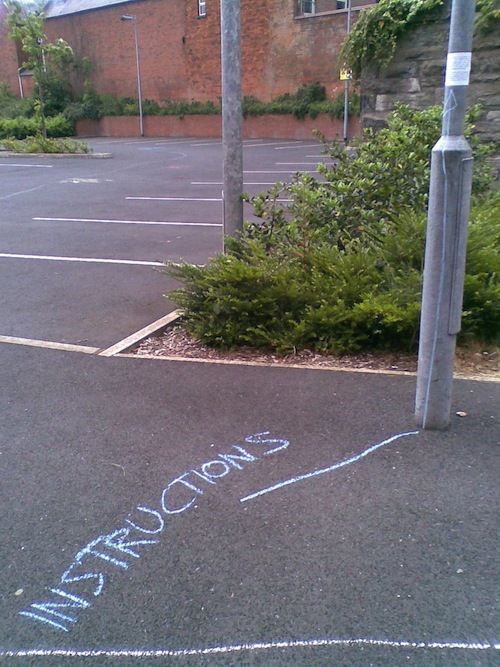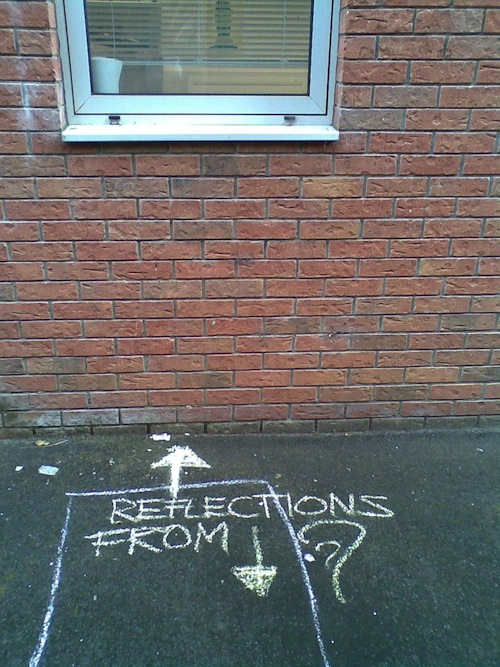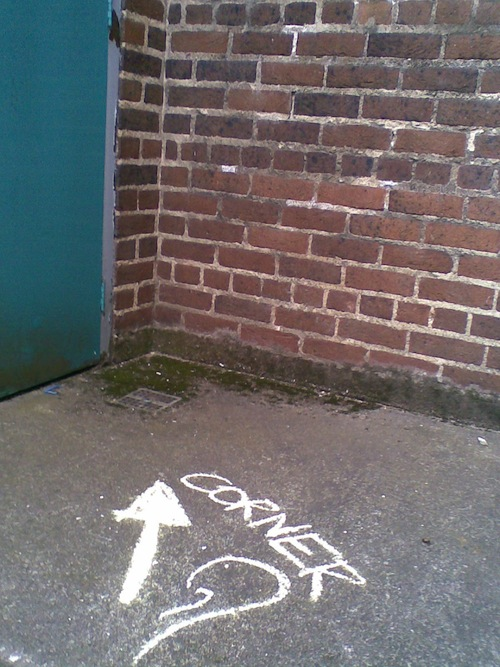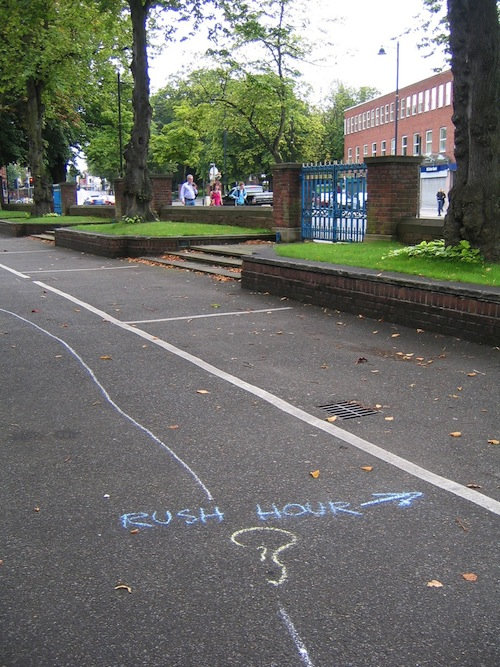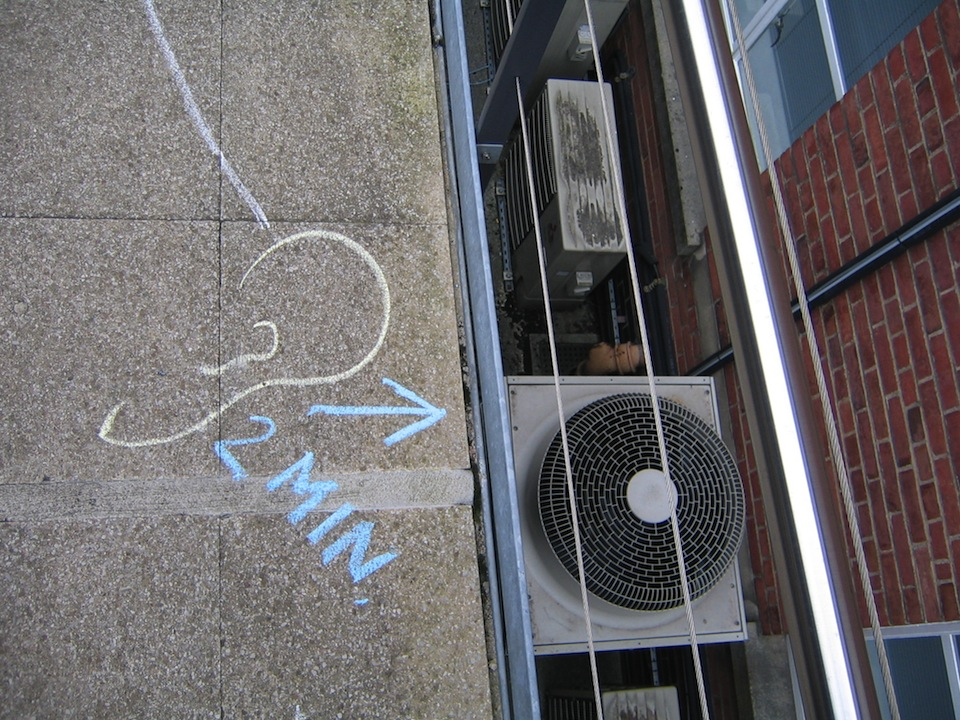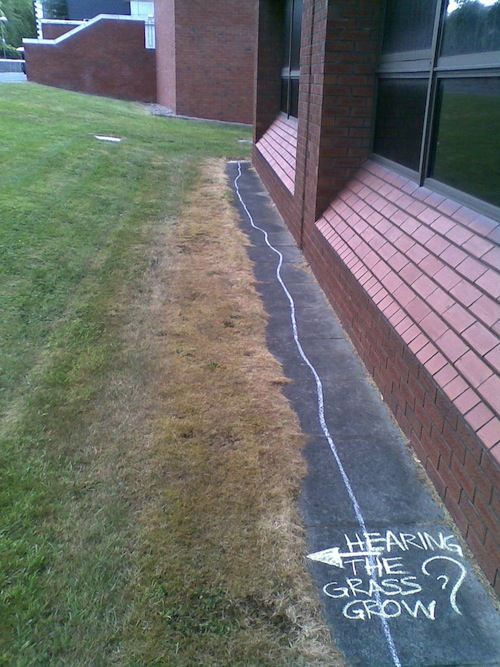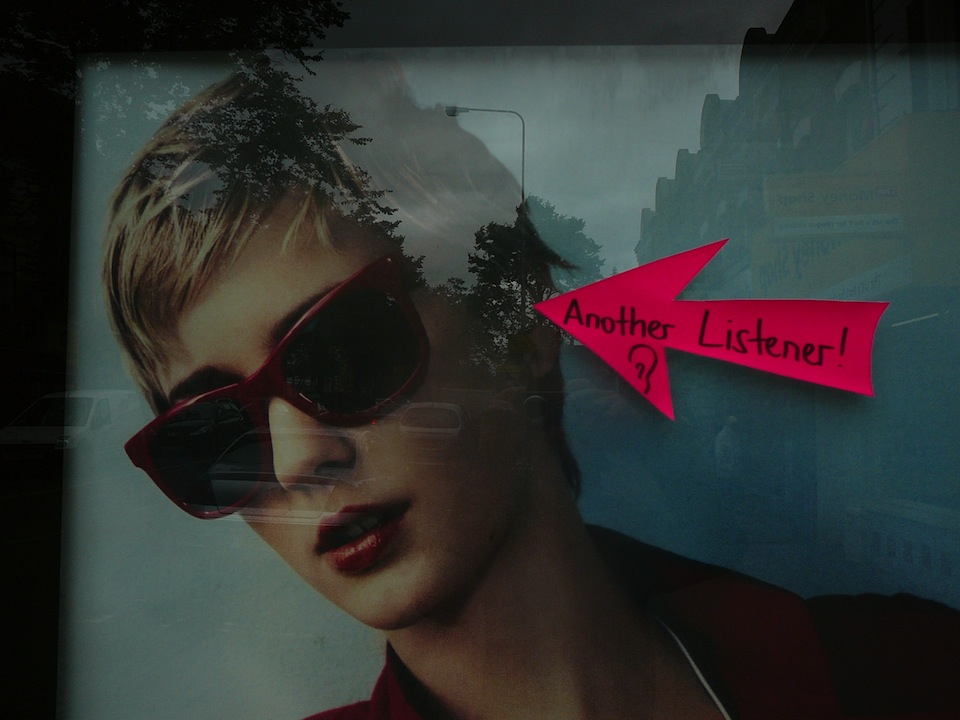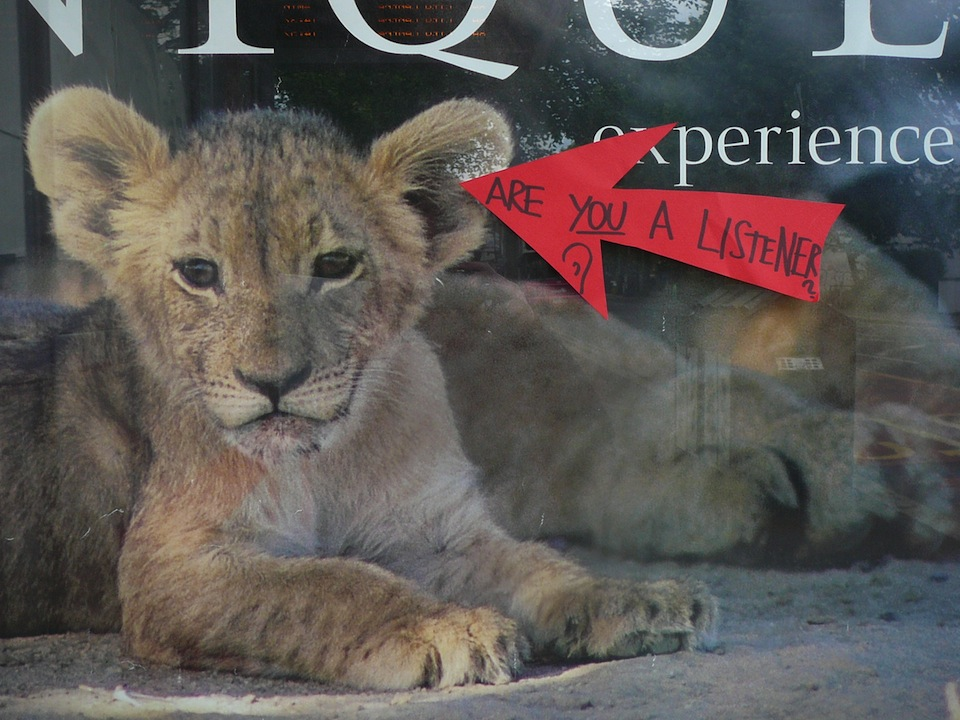STRAßENMUSIK AND EARDVERTS:
PUBLIC LISTENING INTERVENTIONS AS AN ARTISTIC PRACTICE FOR ENCOURAGING AURAL AWARENESS IN AN EVERYDAY CONTEXT
Florian Hollerweger
The plurality of existing methodologies to approach, analyse and study sound arguably stems from the complexity of sound as a physical and perceptual phenomenon. As soon as we study sound, we are compelled to clarify which perspective on sound it is that we adopt (Hollerweger 2011: 64ff). Do we speak of sound as a physical phenomenon? As an indicator of its source (Schaeffer 1966)? As a phenomenological object of perception (ibid.), an effect (Augoyard and Torgue 2006), or in terms of space (Blesser and Salter 2006; Smalley 2007)?
It is often argued that sound cannot be understood as an independent entity and that a deeper understanding of sound arises from a study of aural perception itself. Many recent studies of sound, especially those of an artistic nature, have focused on listening as the act of perception that manifests sound in the first place. “[T]he hearing of sound is what makes it”, as Jonathan Sterne (Sterne 2003: 11) argues, and Bill Fontana declares that “a sound is all the possible ways there are to hear it” (Fontana 2009).
So the question of how to study sound suddenly turns into the question “how do we study listening?” At least from the sound artist’s perspective, the answer to this question is simply “by listening!” Listening is the personal experience par excellence. From an artistic standpoint, there is therefore no better way to study it than to take the time and listen. The artistic promise associated with immersing oneself in one’s own aural perception is the achievement of a greater aural awareness and thereby of a better understanding of sound and perception itself. Composer Peter Ablinger refers to listening as “the means of perceiving perception” (Blomberg 2008: 93; translation by the author)—that is, not just auditory perception.
In the study of listening as a key to a better understanding of sound, the arts have made an enormous contribution. In the twentieth and twenty-first centuries, a wide range of practices has been devised that encourage what I refer to as aestheticized listening. Starting perhaps with Luigi Russolo’s 1913 manifesto L’arte dei rumori (The Art of Noises), and notably through the later work of John Cage, many artists “came to regard listening as a form of composition; as a form of making music” (Bill Fontana, quoted in Worby 2008). These artists seek to “heighten and expand consciousness of sound in as many dimensions of awareness and attentional dynamics as humanly possible” (Oliveros 2005: xxiii).
To achieve such a level of consciousness, aestheticized listening practices include activities that take place before the actual aural experience. R. Murray Schafer has proposed various “ear cleaning” exercises (Schafer 1976), and Pauline Oliveros has adopted a variety of techniques for the purpose of preparing oneself to listen. Her Listening Questions, for example, reflect on auditory perception as an emotional experience:
“What is your earliest memory of sound? [...] What sound reminds you of home? [...] What is listening? [...] How long can you listen? [...] What sound changes your breathing?” (Oliveros 2005: 55f)
Other artworks, by contrast, are concerned with the immediate listening experience, for example by directing the audience’s aural attention to active or passive features of a specific acoustic environment. This strategy is exemplified in Peter Ablinger’s Weiss/weisslich 35, where different plaques posted on the Karlsplatz square in Vienna read:
“The reels of the skateboarders sound brighter on stone than on asphalt or tar. […] The unlubricated swing and the sparrows are located in the same pitch range.” (Ablinger 2006b; translation by the author)
Yet other artworks refer not to acoustic features of the environment but to the very process of listening itself. Sound artists use this technique to aestheticize aural experiences that are not manifest in the world outside of the listener, such as remembered or imagined sounds.
“I imagine the reader looking at this page. All ear. Listening to these words. Hearing this writing. Listening to the sounds I am making at this moment on this page.” (Westerkamp 1999: 17)
Peter Ablinger installs rows of chairs in public spaces, a reference to the concert hall as “the classical occidental site of hearing” (Ablinger 2006a), which is to be understood as an invitation to enjoy everyday sound environments as one would enjoy a concert. In other works, Ablinger directs everyday listening by changing the physical conditions under which it operates. He invites the audience of his 1994 piece Weiss/weisslich 8 to “hold a snail’s shell to your ear” (Ablinger 2002). Another piece instructs you to place your hands behind your ears and remove them again, thereby changing the acoustic circumstances of your experience. Ablinger has also constructed architectural interventions in order to expose his audience to out-of-the-norm listening experiences.
The artistic listening practice which has perhaps the longest tradition of all is the soundwalk. Fluxus artist Philip Corner began to take people on walks in New York in 1966, instructing people to listen to the sounds of the environment “as if at a concert” (Corner 1982, quoted in Drever 2009: 185). In the same year and city, Max Neuhaus started to lead soundwalks as part of his LISTEN series (Neuhaus 1990). A similar approach was adopted by John Cage in his 1971 Demonstration of the Sounds of the Environment (Drever 2009: 187). Hildegard Westerkamp defines the soundwalk as “any excursion whose main purpose is listening to the environment” (Westerkamp 2007: 49). The variations on this simple theme of walking and listening are manifold and have instigated a diverse methodology (Drever 2009: 163). Soundwalks are performed alone or as a group, often led by an artist with prior experience, who might design the walk according to specific acoustic features that can be expected en route. The participants usually refrain from speaking during the walk. Far from being an esoteric activity, soundwalking has even become accepted as a research method in urban design (Venot and Sémidor 2006;Adams and Bruce 2008; Adams 2009).
In this article, I will discuss two of my own works, Straßenmusik and EaRdverts, which are firmly situated in the historical context of the above artworks and draw from several of the aestheticized listening techniques that these exhibit. My artistic practice adopts a variety of forms, including sound installations, directed listening scores and mobile hardware projects. The two pieces which I will present in this article belong to a category that I refer to aspublic listening interventions. By this I mean any situation designed by an artist in a public environment which serves the purpose of drawing the public’s attention to the sounds of that environment, or to the way in which one attends to these sounds. I regard these works as an artist’s contribution to the study and communication of sonic experience and will discuss the idiosyncrasies, challenges and possible contributions of public listening interventions.
Straßenmusik can literally be translated as “street music”, but it is also the German term for “busking” and the title of a series of silent sound interventions. On two occasions, I have created an in situ score for a soundwalk around different buildings in South Belfast. A trail of white chalk invited random passers-by to follow a path through an area of their everyday environment that they were likely to be unfamiliar with (cf. figure 1). Detailed instructions were posted on a lamppost close to the start of the walk (cf. figure 2). Further along the way, acoustic features characteristic to the respective environment were marked and described (cf. figures 3, 4, 5). The audience would also encounter textual instructions, such as to listen to an air-conditioning system for two minutes (cf. figure 6), or metaphorical references such as “Hearing the grass grow” (cf. figure 7). An impression of the walk is given in an accompanying video. The pieces aim at encouraging pedestrians to rediscover the “uninteresting” sites of their everyday lives, which do not usually make it to the foreground of their acoustic attention.
In Straßenmusik, one can recognize several of the artistic techniques that I have described earlier. The work is effectively a soundwalk, which is guided by a prepared score rather than a human guide. During the walk, the audience’s aural attention is directed to specific acoustic features of the surrounding environment, but also to the process of listening itself.
There are some interesting parallels to other artworks, such as Walter De Maria’s Two Parallel Lines (1968), which featured two mile-long lines of chalk in the Nevada Desert and La Monte Young’s Composition 1960 #10 to Bob Morris, whose score reads “Draw a straight line and follow it”. Olafur Eliasson also uses white lines of chalk to attract the attention of passers-by to his public interventions. I also learnt about a German-Austrian tradition called “Maistrich”, where a line of lime is drawn between the houses of two lovers by considerate neighbours on the night before the first of May. Incidentally, several cafes and a cinema in South Belfast started advertising in chalk on public pavements a couple of months after I had realised Straßenmusik, but there is most likely no relation to my work.
EaRdverts is a public intervention in which any ears visible on advertising billboards in a certain urban area are marked with big coloured arrows. The arrows use the same ear iconography (one could speak of an “earconography”) which has also been employed in Straßenmusik. However, in contrast to that work, the coloured arrows in EaRdverts do not feature textual references to acoustic features of the respective environment, but only to the process of listening itself (cf. figures 8, 9, 10, 11, 12).
EaRdverts aims at gradually raising its audience’s aural awareness rather than at an immediate, spectacular effect. Seeing one arrow is probably not enough to make one listen. After encountering several of them over an extended period of time, their presence might slowly start to stimulate a reaction. Coming across one hundred of them over the course of a week (as would have been possible in Belfast’s Queen's quarter at the time of the project’s realisation) might encourage some people to start listening to their environment more consciously.
To encourage aural awareness in an everyday context, it seems natural to carry sound art into an everyday context rather than wait for the audience to come to a gallery or concert hall. The public intervention appears to be a suitable format for this purpose, since it lets sound art “enter into people’s daily lives”, a desire that Max Neuhaus (Neuhaus 1994a) shares with other artists.
However, such an artistic strategy is not free of challenges. One property of the public sphere that Straßenmusikand EaRdverts quickly revealed was just how saturated it is with visual media. In an environment where people are used to filtering out unwanted perceptual intrusions, it is difficult to convey yet another message, even if it is of a non-commercial nature. This problem was particularly pronounced with EaRdverts, which, by its very design, competes directly with advertising. But even in the case of Straßenmusik, which operates on a much more visible, less subtle scale, I had to consider it a success if pedestrians briefly turned their heads because of the unfamiliar drawings on the road. The average attention span of those people who noticed the piece at all appeared to be on the order of three seconds or less. The fragmented nature of everyday practices, which tend to not have a clear beginning or end and are prone to interruption (Abowd, Mynatt and Rodden 2002: 53), clearly challenges artworks that operate in public environments.
In the case of EaRdverts, an observation of audience reactions was additionally complicated by the cumulative nature of the work. Potential listeners will likely not even notice the first ear-pointing arrow that they encounter and might only consciously notice their presence after seeing several of them. As this process evolves, the audience might never actually attend to the work in an easily observable manner. The only visible way in which (some) people interacted with EaRdverts was through vandalism. A surprisingly large amount of paper arrows were deliberately removed from where I had planted them or torn to pieces. I do not know by whom or why this was done and whether or not it was a single person, but it seems that the paper arrows, as opposed to the billboards which they were attached to, violated some unspoken social code.
Even more difficult to evaluate was whether Straßenmusik and EaRdverts actually initiated an aural experience in their potential audiences. Such an experience might not have been facilitated by the fact that both works convey their message about listening by attracting people’s visual attention, which the audience might misinterpret as an invitation to look rather than to listen. By contrast, the artistic direction of listening through sound, as in Max Neuhaus’ Times Square installation (Neuhaus 1994b), has the advantage that the sense being addressed (hearing) matches the medium employed for doing so (sound). But even when people do listen to Straßenmusik andEaRdverts, how does one tell? Max Neuhaus (Neuhaus 1994b: 3) has pointed out that, whereas one can observe whether someone is looking at a visual artwork, there is no way of seeing whether someone listens.[1] If people turn their heads to the chalk drawings of Straßenmusik, that does not necessarily mean that their aural awareness has been raised. To find out whether it has, interviews with passers-by might constitute a more suitable method than mere observation, and both interventions could probably have benefitted from them. At the same time, it is difficult to conceive of an interview protocol that would yield representative results without requiring an effort substantially exceeding that of creating the artwork itself.
With this last statement, I would like to shift my discussion to the specific contributions that sound art in public environments can make to the study and communication of sonic experience and how these differ from the methods of, say, social research or urban design. This difference has been marked by Max Neuhaus, who has questioned the value of observing the audiences of his unmarked, often anonymous, sound installations.
“Yes, I could go and observe people. But I know what [my] work is, I know what it can do, otherwise I wouldn’t be a very good artist.” (Neuhaus 1994c: 3)
I interpret Neuhaus’ controversial statement as an expression of trust that the impact of his artworks extends far beyond the immediate encounter with their audience. In my own experience, listeners often report a change in their aural awareness weeks or even months after being exposed to a work of sound art. However, such subtle shifts of perception are difficult to measure, especially for the large, anonymous audiences of public listening interventions.
To a practising artist, the question therefore arises how much imagination and time one devotes to evaluating the public’s reaction to one’s work, as opposed to creating actual new works. One solution might be to assemble interdisciplinary research teams, in which sound artists are responsible for conveying new works and concepts, the public’s reactions to which are then evaluated by social researchers, writers, etc. Conceptual artworks likeStraßenmusik or EaRdverts have the potential to capture the imagination of audiences who have never been directly exposed to these works, but who instead experience them through documentation, such as audio or video recordings, journal articles, etc. The quality of such documentation, and thereby the artwork’s impact, can be significantly improved if it is informed by encounters of audiences who have experienced the work directly. At the same time, for art to achieve its potential of changing people’s perspective on the world, we need to encourage its actual presence in everyday life. In my opinion, the creation and distribution of such work should therefore be regarded as the primary contribution of sound art to the study of listening.
As I have tried to demonstrate in this article, sound art as an artistic discipline provides a rich variety of techniques for the study of sonic experience. But the works that I have discussed are not only concerned with studying aural awareness in public environments. As artworks, they naturally seek to provide an aesthetically stimulating environment that encourages such an awareness in the first place. They achieve this by providing a means not merely of studying, but primarily of communicating sonic experience, thereby contributing to the interdisciplinary discourse on sound.
The desire of an individual (i.e., the artist) to communicate her or his individual experience to other human beings (i.e., the audience) is probably one of the major driving forces of artistic creation in general. This is also true for auditory perception. The artistic listening practices discussed in this article are primarily a means of communicating an otherwise notoriously private sensory experience. They acknowledge the individuality of listening, but nevertheless attempt to share the essence of personal sonic experience, which is familiar to all of us. Straßenmusikuses the sounds of the outside world as a common reference point that connects individual aural experiences. The work effectively says, “can you also hear what I hear?” EaRdverts, on the other hand, refers exclusively to the listener’s private experience. It communicates sound merely by saying, “do you listen, too?” This desire to communicate is also evident in the many works where artists communicate their aural impressions by annotating them, either orally or in writing. Examples include Pauline Oliveros’ 1968 article Some Sound Observations(Oliveros 2004) and Peter Ablinger’s performance Sitting and Saying What I Hear (Ablinger 2007; translation by the author).
It is interesting to note that almost all the artworks that I have presented in this article refrain from the creation of sound themselves. In Straßenmusik and EaRdverts, I have chosen to communicate sonic experience precisely bynot articulating sound, and the same is true for many works by other artists. Although sound artists can afford to answer the question of how to study sound with a simple “by listening!”, many of them chose to communicate sonic experience by other means than sound. Of course there are also examples of artworks where the audience is expected to create sound as a means of increasing their aural awareness, or where the artist directs aural attention through specifically designed sounds. Nevertheless, it is interesting to note the variety of “silent” practices in sound art. This might have to do with the ubiquity of mediated sonic experiences in the modern soundscape. As artists, how do we get people to listen in an everyday context, which is already saturated by media? Probably not by playing more sound at them. This subtlety has become a deliberate and meaningful metaphor for many artists working in sound.
(1) Strictly speaking, I think one cannot even do the former. Through observation, one can see whether somebody directs visual attention in a certain direction. One can see someone gaze; that’s about it. But gazing is as different from looking as hearing is from listening.
The listening interventions Straßenmusik and EaRdverts have been pursued as part of a PhD at the Sonic Arts Research Centre, Queen’s University Belfast, Northern Ireland, funded by a SPUR (Special Programme for University Research) studentship and supervised by Prof. Pedro Rebelo and Prof. Michael Alcorn.
Ablinger, Peter (2002). Weiss/weisslich 8. Retrieved June 12, 2009, from http://ablinger.mur.at/ww8.html
Ablinger, Peter (2006a). 6th Act: The Seating. Retrieved June 12, 2009, fromhttp://ablinger.mur.at/docu15engl_act6.html
Ablinger, Peter (2006b). Weiss/weisslich 35, Schilderungen (1998): hinweisende Beschilderungen akustischer Situationen. Retrieved June 12, 2009, from http://ablinger.mur.at/docu09.html
Ablinger Peter (2007). Hörstücke. Retrieved June 2, 2009, from http://ablinger.mur.at/hoerstuecke.html
Blomberg, Katja (2008). HÖREN hören / hearing LISTENING. Heidelberg: Kehrer Verlag.
Abowd, Gregory D., Elizabeth D. Mynatt and Tom Rodden (2002). “The Human Experience.” Pervasive Computing1(1): 48–57.
Adams, Mags (2009). “Hearing the City: Reflections on Soundwalking.” Qualitative Researcher 10: 6–9.
Adams, Mags and Neil Bruce (2008). “Soundwalking as Methodology for Understanding Soundscapes.” InProceedings of the UK Institute of Acoustics, volume 30, part 2: 552–8.
Augoyard, Jean-Francois and Henri Torgue (2006). Sonic Experience: A Guide to Everyday Sounds. (trans. Andra McCartney and David Paquette). Montréal: McGill-Queen’s University Press.
Blesser, Barry and Linda-Ruth Salter (2006). Spaces Speak, Are You Listening? Experiencing Aural Architecture. Cambridge, MA: MIT Press.
Corner, Philip (1982). I Can Walk Through the World as Music: First Walk. Barrytown, NY: Printed Editions.
Drever, John Levack (2009). “Soundwalking: Aural Excursions into the Everyday.” In James Saunders (ed.), The Ashgate Research Companion to Experimental Music (pp. 163–92). Aldershot: Ashgate Publishing.
Fontana, Bill (2009). Essays by Bill Fontana. Retrieved June 12, 2009, fromhttp://www.resoundings.org/Pages/EssaysbyBillFontana.html
Hollerweger, Florian (2011). The Revolution is Hear! Sound Art, the Everyday and Aural Awareness (Doctoral dissertation). Belfast: Queen’s University Belfast.
Neuhaus, Max (1990). “LISTEN.” In Dan Lander and Micah Lexier (eds.), Sound By Artists (pp. 63–7). Banff: Walter Phillips Gallery.
Neuhaus, Max (1994a). The Institutional Beast. Retrieved July 6, 2010, from http://www.max-neuhaus.info/bibliography/InstitutionalBeast.pdf Originally published in Neuhaus, Max (1994). Sound Works, vol. 1.Ostfildern-Stuttgart: Cantz.
Neuhaus, Max (1994b). Lecture at the Siebu Museum Tokyo 1982: Talk and question period. Retrieved July 5, 2010, from http://www.max-neuhaus.info/bibliography/Tokyo.pdf Originally published in Neuhaus, Max (1994). Sound Works, vol. 1. Ostfildern-Stuttgart: Cantz.
Neuhaus, Max (1994c). Lecture at the University of Miami: Excerpts from talk and question period. Retrieved July 8, 2010, from http://www.max-neuhaus.info/bibliography/Miami.pdf Originally published in Neuhaus, Max (1994).Sound Works, vol. 1. Ostfildern-Stuttgart: Cantz.
Oliveros, Pauline (2004). “Some Sound Observations.” In Christoph Cox and Daniel Warner (eds.), Audio Culture. Readings in Modern Music (pp. 102–6). New York: Continuum Publishing. Originally published in the Sourcemagazine, San Francisco, 1968.
Oliveros, Pauline (2005). Deep Listening: A Composer’s Sound Practice. New York: iUniverse.
Schaeffer, Pierre (1966). Traité des objets musicaux: Essai interdisciplines. Paris: Éditions du Seuil.
Schafer, Raymond Murray (1976). Creative Music Education. New York: Schirmer Books.
Smalley, Denis (2007). “Space-form and the Acousmatic Image.” Organised Sound 12(1): 35–58.
Sterne, Jonathan (2003). The Audible Past: Cultural Origins of Sound Reproduction. Durham: Duke University Press.
Venot, Flora and Catherine Sémidor (2006). “The ‘Soundwalk’ as an Operational Component for Urban Design.” InProceedings of the 23rd Conference on Passive and Low Energy Architecture, volume 2 (pp. 619–24). Geneva: Switzerland.
Westerkamp, Hildegard (1999). “Say Something about Music...” In Brandon LaBelle and Steve Roden (eds.), Site of Sound: Of Architecture and the Ear (pp. 17–25). Los Angeles: Errant Bodies Press.
Westerkamp, Hildegard (2007). “Soundwalking.” In Angus Carlyle (ed.), Autumn Leaves: Sound and the Environment in Artistic Practice (pp. 49–54). Paris: Double Entendre. Originally published in: Sound Heritage3(2), 1974.
Worby, Robert (Producer). (2008, September 27). Hear and Now. London: BBC Radio 3.

